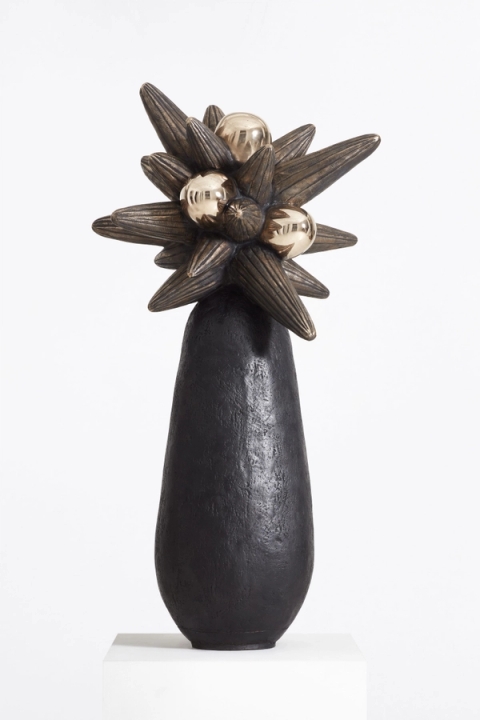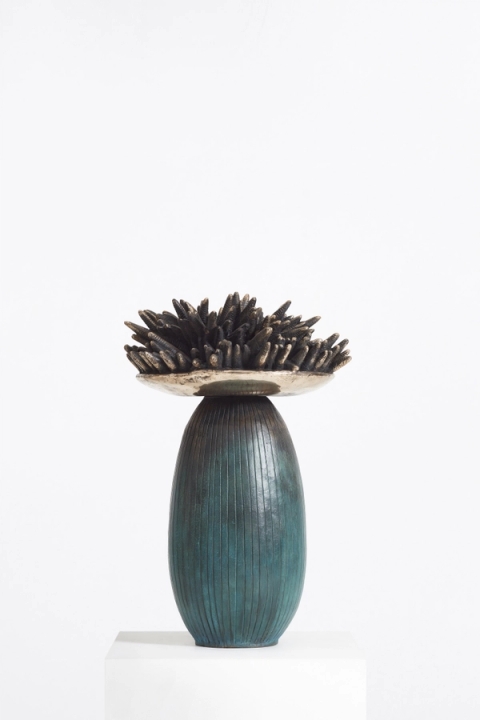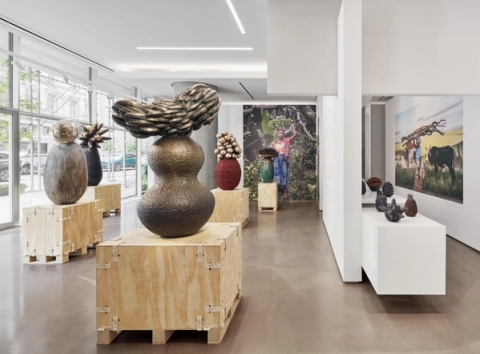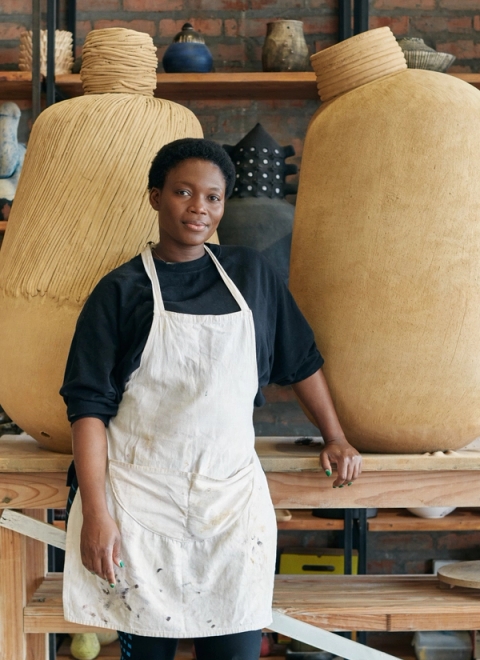My Enquiry (0)
No artwork has been selected.
Please choose an artwork to enquire.
Enquiry Submitted
Thank you for your enquiry and interest in our artists’ work. A member of the gallery team will respond shortly.
000%
15 May - 26 Aug 2023
With their exuberant shapes and resplendent patinas, the works in iiNtsika zeSizwe (Pillars of the Nation) elevate to heroic status the everyday practice of ‘umthwalo’ – the isiXhosa word for ‘load’ – whereby women transport heavy items on foot by carrying them on their heads.
Southern Guild and Galerie56 present iiNtsika zeSizwe (Pillars of the Nation), a solo exhibition of bronze sculptures by Zizipho Poswa, at Galerie56 in Manhattan’s Tribeca. This is Poswa’s debut solo exhibition in the United States and her first body of work made entirely in bronze.
Poswa’s monumental sculptures are bold declarations of African womanhood. She is inspired by her Xhosa heritage and the life-sustaining roles that African women play in traditional and contemporary life. iiNtsika zeSizwe expands on the thematic interests of Poswa’s first series of major hand-coiled ceramic sculptures, titled Umthwalo, which stacked abstract forms on top of voluminous bases to create totems symbolizing female strength and resilience.
In the rural Eastern Cape province (and other parts of South Africa), women traditionally perform the tasks of gathering wood, collecting water and taking bucket loads of clothing to wash in the river. For Poswa, who partook in these daily rituals as a young girl, the strength required to balance these burdens and walk long distances is testimony to the endurance of Xhosa women.
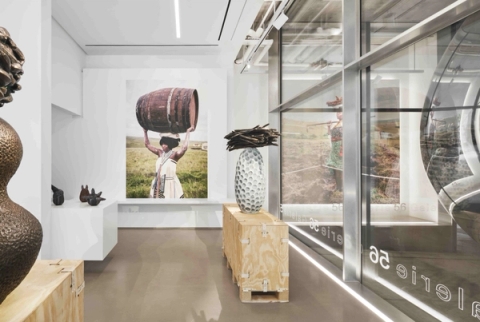
The artist notes that her first US solo is a tribute to her own mother, the community of women who raised her and others like them, whose contribution to society is rarely recognised. “These are the pillars of our nation” in Poswa’s words; monuments to sustenance and sacrifice given the lustre and permanence of bronze, a material historically reserved for colonial patriarchs and the architects of Apartheid.
Standing at variable heights up to 1.6 metres (5 feet) tall, the seven bronze sculptures in iiNtsika zeSizwe depict precariously arranged objects – a barrel, a pile of sticks, bundles of fruits and vegetables – that appear almost in motion. Their textured and rounded forms make use of a rich array of bronze patinas and finishes. A series of large photographs, commissioned especially for the exhibition, portray Poswa in various acts of ‘umthwalo’ in and around her rural village, Holela, in the Eastern Cape province of South Africa.
Artist
Works
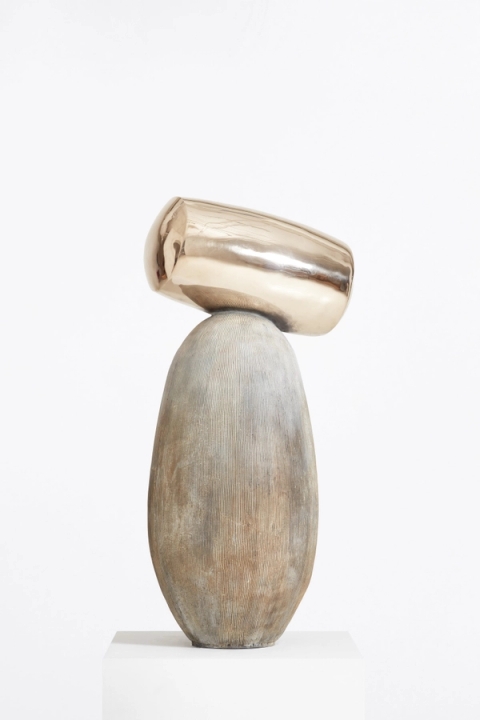
Zizipho Poswa
Mam'uNoZinzile, 2023Bronze
50.38 x 24.38 x 17.38 in. | 128 x 62 x 44 cm
Edition of 5
Sold
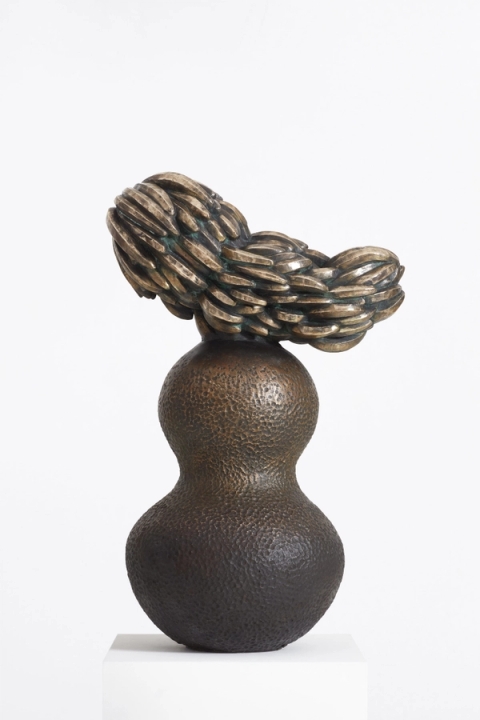


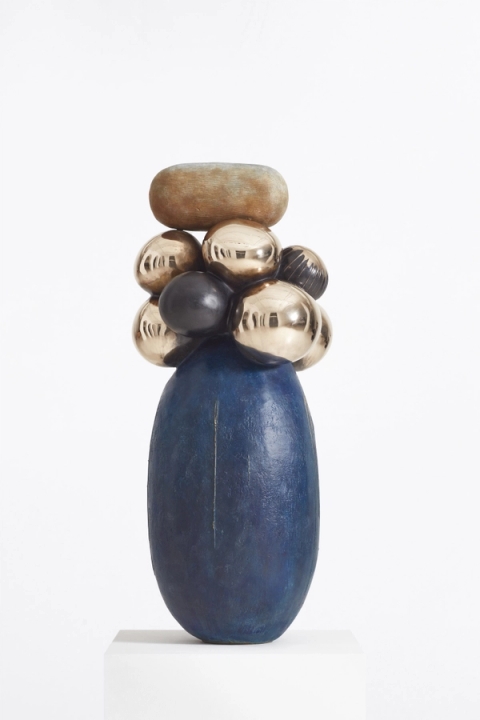
Zizipho Poswa
Mam'uNoNezile, 2023Bronze
53.5 x 23.63 x 22.88 in. | 136 x 60 x 58 cm
Edition of 5
Sold
